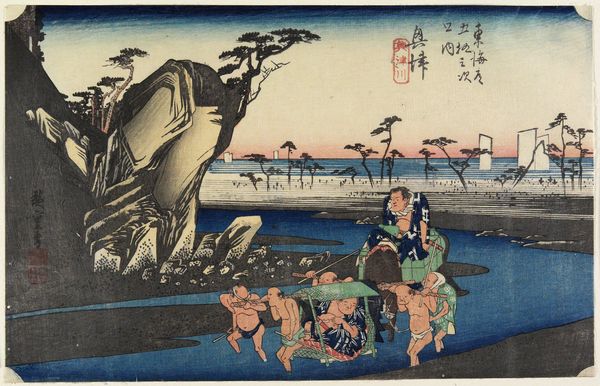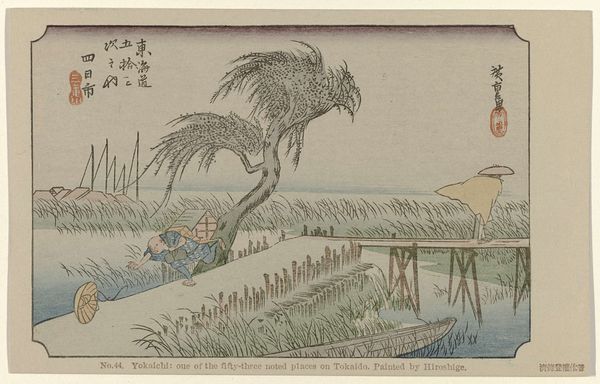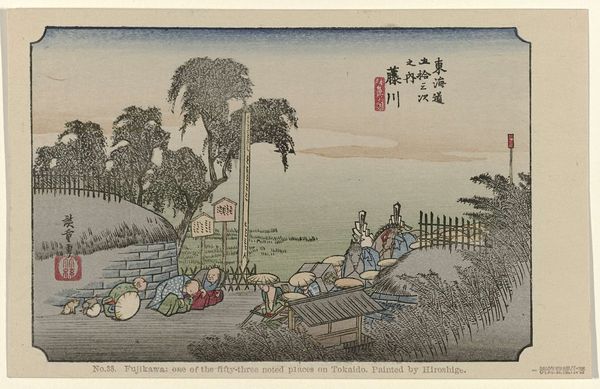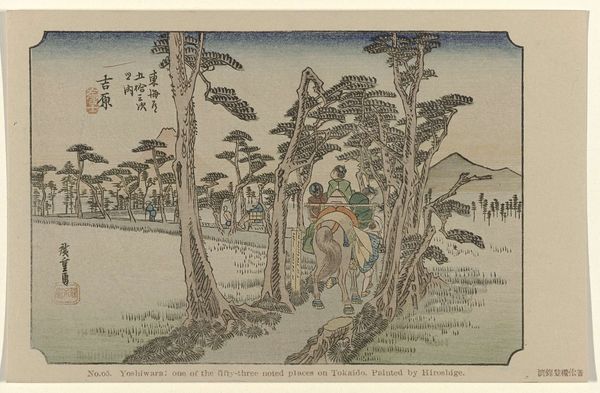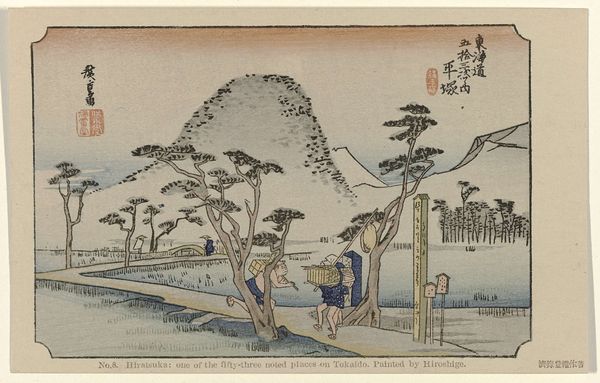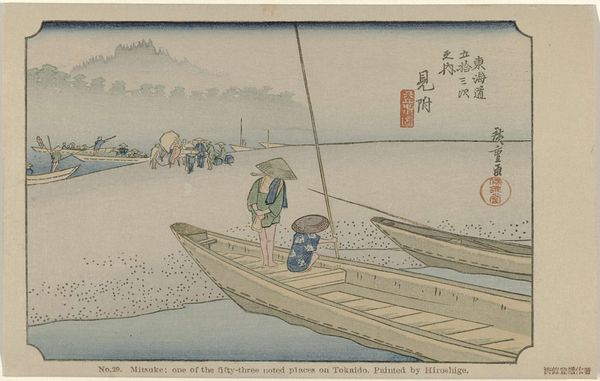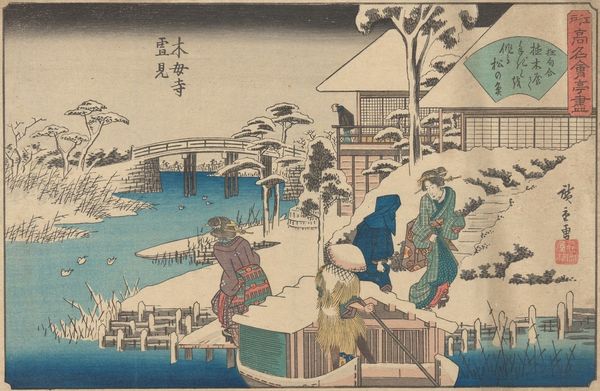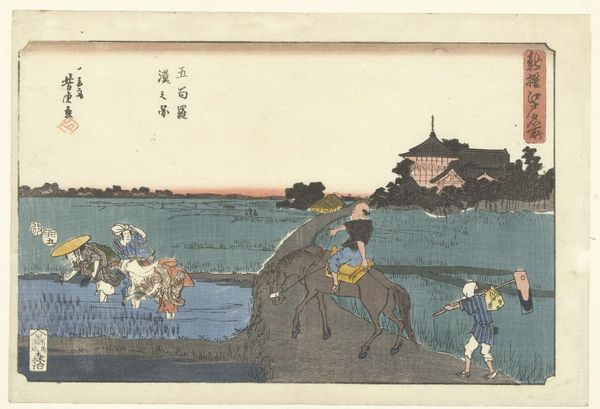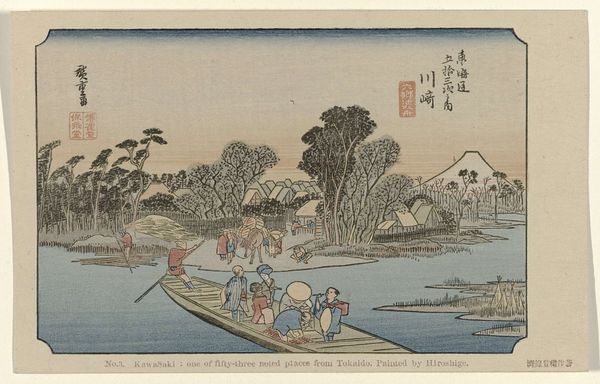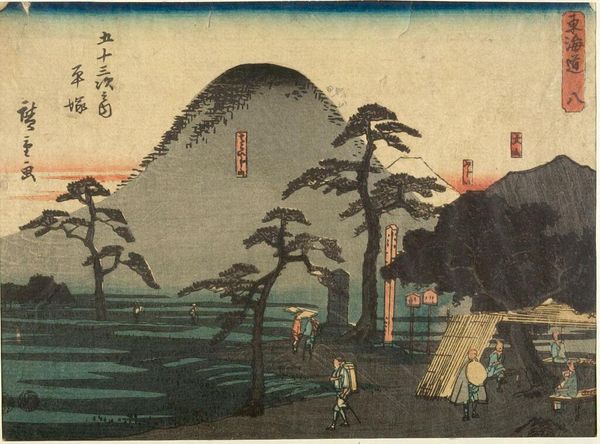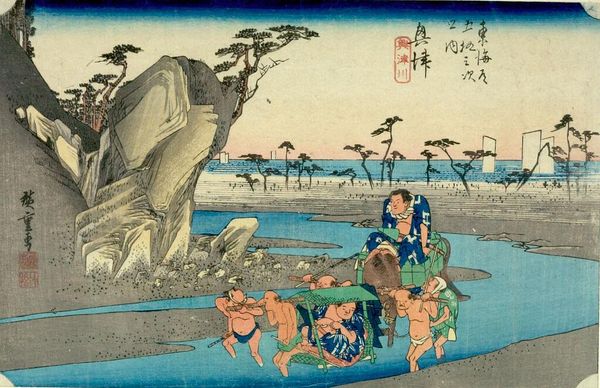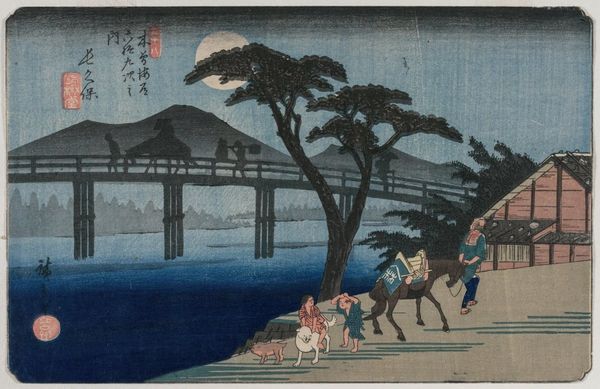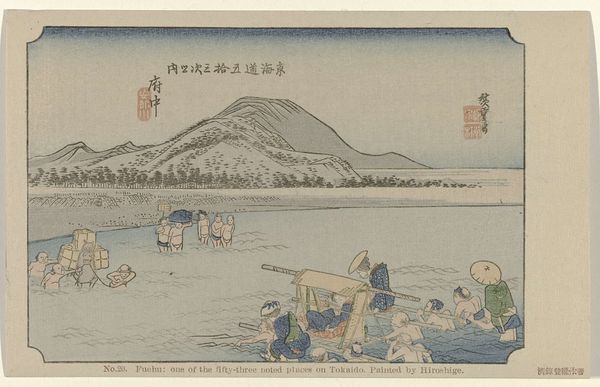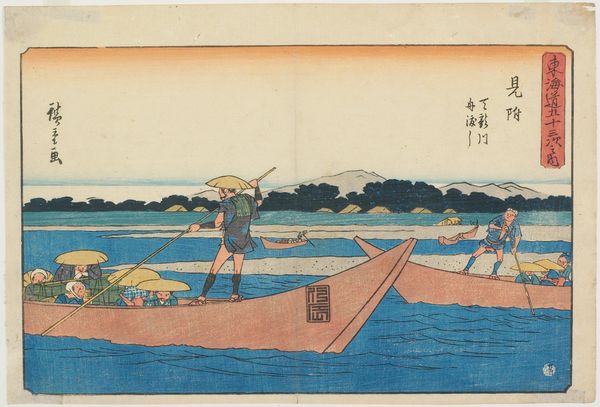
Dimensions: height 90 mm, width 141 mm
Copyright: Rijks Museum: Open Domain
Curator: Looking at “Okitsu,” a woodblock print from 1906 by Utagawa Hiroshige, part of the “Fifty-Three Stations of the Tokaido” series, I immediately notice the subdued colors. Editor: The composition is so interesting – this diagonal sweep from the towering rock formation on the left to the almost dreamlike landscape in the background creates a striking contrast between the immediate and the distant. I feel like it emphasizes the materiality of travel at the time, specifically. Curator: It’s fascinating how Hiroshige captures this tension between landscape and labor. The porters wading through the water bearing travelers in a palanquin is the result of human effort. I mean, notice the grain of the wood in the rock face? The craft involved in carving that alone…and then imagine the workforce dedicated to producing these prints on a mass scale for popular consumption. Editor: Precisely. The porters are the workhorses here. But those two figures within the palanquin – elevated physically and, symbolically, socially— speak volumes about status. The imagery really focuses our attention to ideas of hierarchy and tradition, as well as physical toil. The rocks resemble some sentinels as if guarding this passage or way of life. Curator: It's crucial to consider this was made at a time when Japan was industrializing rapidly. These prints served a burgeoning merchant class who yearned for scenes of natural beauty. And what looks “natural” is so carefully constructed: the carving, the inking, the paper...each impression a physical record of cultural values at a turning point. Editor: And even further, this single palanquin crossing a wide expanse emphasizes a singular journey –perhaps an allegory for individual transformation—within this cultural framework. Consider the historical relevance, now, it becomes this lasting reminder, this collective memory. Curator: Indeed, it allows us to rethink the idea of 'landscape' entirely, showing us how art is never simply about depicting the world, but about shaping it through labor, materials, and visual culture. Editor: And how persistent some images are—persisting across generations because we imbue them with our own aspirations, social meanings and historical knowledge.
Comments
No comments
Be the first to comment and join the conversation on the ultimate creative platform.
